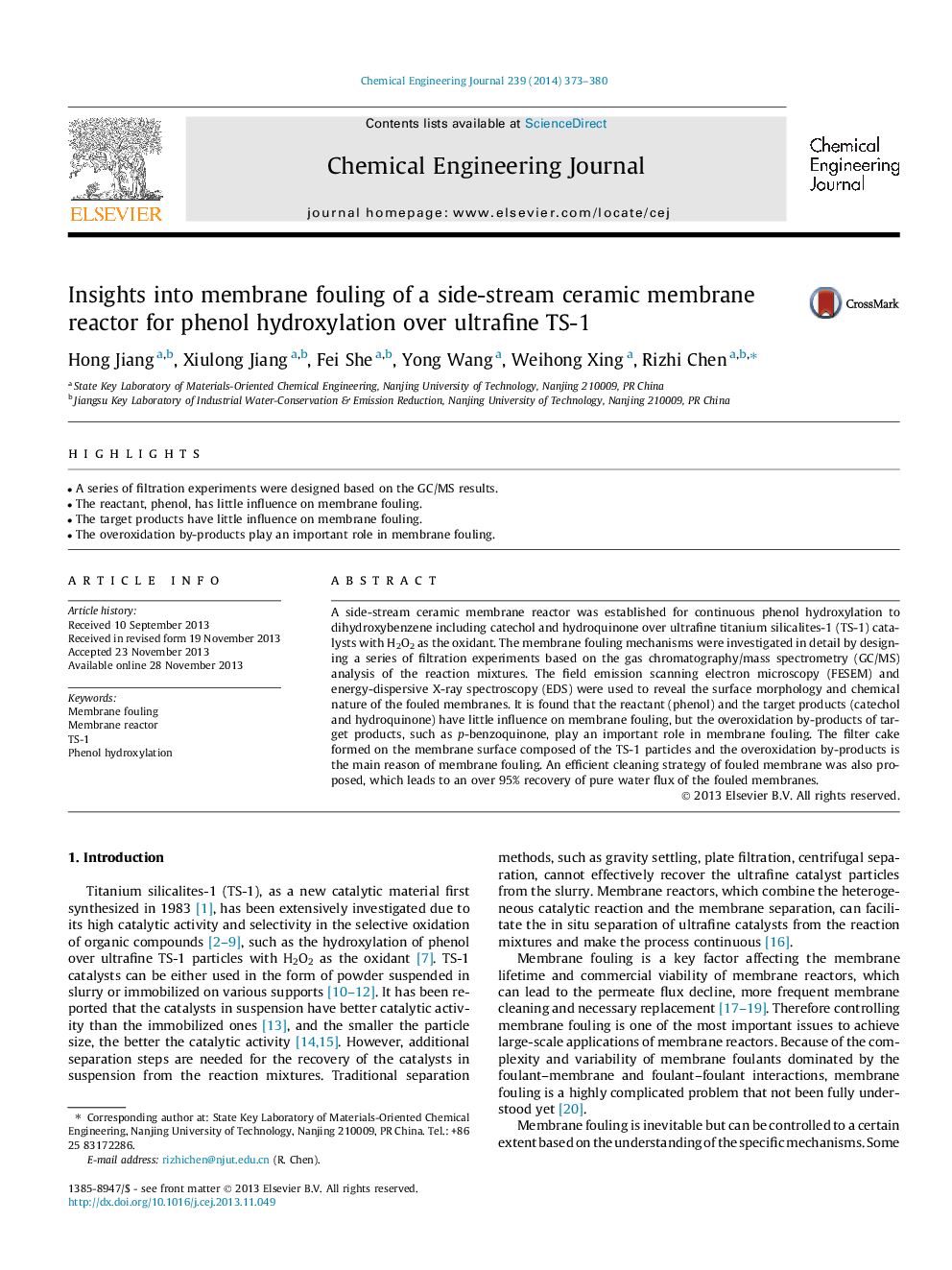| Article ID | Journal | Published Year | Pages | File Type |
|---|---|---|---|---|
| 147960 | Chemical Engineering Journal | 2014 | 8 Pages |
•A series of filtration experiments were designed based on the GC/MS results.•The reactant, phenol, has little influence on membrane fouling.•The target products have little influence on membrane fouling.•The overoxidation by-products play an important role in membrane fouling.
A side-stream ceramic membrane reactor was established for continuous phenol hydroxylation to dihydroxybenzene including catechol and hydroquinone over ultrafine titanium silicalites-1 (TS-1) catalysts with H2O2 as the oxidant. The membrane fouling mechanisms were investigated in detail by designing a series of filtration experiments based on the gas chromatography/mass spectrometry (GC/MS) analysis of the reaction mixtures. The field emission scanning electron microscopy (FESEM) and energy-dispersive X-ray spectroscopy (EDS) were used to reveal the surface morphology and chemical nature of the fouled membranes. It is found that the reactant (phenol) and the target products (catechol and hydroquinone) have little influence on membrane fouling, but the overoxidation by-products of target products, such as p-benzoquinone, play an important role in membrane fouling. The filter cake formed on the membrane surface composed of the TS-1 particles and the overoxidation by-products is the main reason of membrane fouling. An efficient cleaning strategy of fouled membrane was also proposed, which leads to an over 95% recovery of pure water flux of the fouled membranes.
